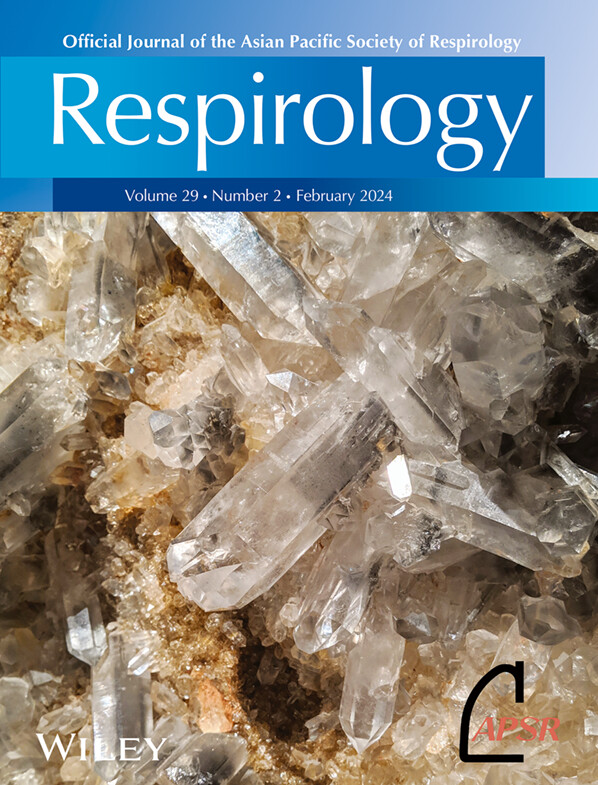Benefits of chest wall mobilization on respiratory efficiency and functional exercise capacity in people with severe chronic obstructive pulmonary disease (COPD): A randomized controlled trial
IF 6.6
2区 医学
Q1 RESPIRATORY SYSTEM
引用次数: 0
Abstract
BackgroundCoexistence of chest wall hypomobility and lung hyperinflation compromises respiratory muscle function and respiratory efficiency in people with severe chronic obstructive pulmonary disease (COPD). This study aimed to investigate the effect of chest wall mobilization on functional exercise capacity, respiratory muscle activity and respiratory muscle tissue oxygen saturation for people with severe COPD.MethodsThirty male adults (age: 75 ± 6) diagnosed with severe COPD completed a 6‐week programme (twice/week) according to intervention randomization (chest wall mobilization group, CWMG,胸壁运动对严重慢性阻塞性肺病 (COPD) 患者呼吸效率和功能锻炼能力的益处:随机对照试验
背景严重慢性阻塞性肺疾病(COPD)患者的胸壁活动度不足和肺过度充气会损害呼吸肌功能和呼吸效率。本研究旨在探讨胸壁移动对重度慢性阻塞性肺疾病患者的功能锻炼能力、呼吸肌活动和呼吸肌组织氧饱和度的影响。方法30名确诊为重度慢性阻塞性肺疾病的男性成年人(年龄:75 ± 6)根据干预随机分组(胸壁移动组,CWMG,n = 15;对照组,CG,n = 15)完成了为期 6 周的计划(两次/周)。两组均接受标准化教育和步行锻炼,CWMG 组还接受胸壁和胸椎动员。在计划前、计划后和 3 个月的随访中,测量并比较了两组患者在增量循环运动测试中呼吸要肌、辅助肌的肌电图和肋间肌组织氧饱和度(StO2,通过近红外光谱测定)。与 CG 相比,CWMG 患者在运动测试中的头皮肌、胸锁乳突肌和肋间肌活动明显减少(p <0.01)。在运动测试中,CWMG 的血氧饱和度(StO2)明显下降(p < 0.05),氧离斜率下降幅度更大(p = 0.000)。结论CWMG在运动耐量、呼吸肌效率和氧合萃取能力方面的改善表明,胸壁和胸椎综合运动对严重慢性阻塞性肺疾病患者的康复具有潜在的临床益处。
本文章由计算机程序翻译,如有差异,请以英文原文为准。
求助全文
约1分钟内获得全文
求助全文
来源期刊

Respirology
医学-呼吸系统
CiteScore
10.60
自引率
5.80%
发文量
225
审稿时长
1 months
期刊介绍:
Respirology is a journal of international standing, publishing peer-reviewed articles of scientific excellence in clinical and clinically-relevant experimental respiratory biology and disease. Fields of research include immunology, intensive and critical care, epidemiology, cell and molecular biology, pathology, pharmacology, physiology, paediatric respiratory medicine, clinical trials, interventional pulmonology and thoracic surgery.
The Journal aims to encourage the international exchange of results and publishes papers in the following categories: Original Articles, Editorials, Reviews, and Correspondences.
Respirology is the preferred journal of the Thoracic Society of Australia and New Zealand, has been adopted as the preferred English journal of the Japanese Respiratory Society and the Taiwan Society of Pulmonary and Critical Care Medicine and is an official journal of the World Association for Bronchology and Interventional Pulmonology.
 求助内容:
求助内容: 应助结果提醒方式:
应助结果提醒方式:


